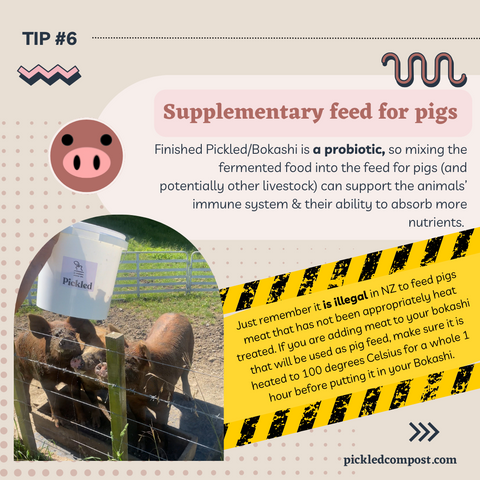6 Tips to Process and Use Pickled Food Scraps (Finished Bokashi)
Share
So you’ve filled your pickling / Bokashi bucket, left it for a week or more (or approx. two months in this case), it smells like pickles and there’s white mycelium (fungal/bacterial threads) growing on top.
What options are there to use and process this probiotic creation?
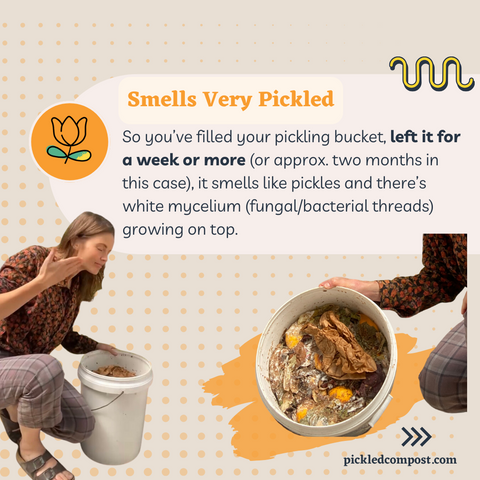
TIP #1 - Empty Into A Compost Bin
This means adding equal volume of browns (i.e. carbon heavy material e.g. dried leaves, wood mulch, cardboard, paper etc.) and mixing this altogether. This will help ‘activate’ and heat up your compost.
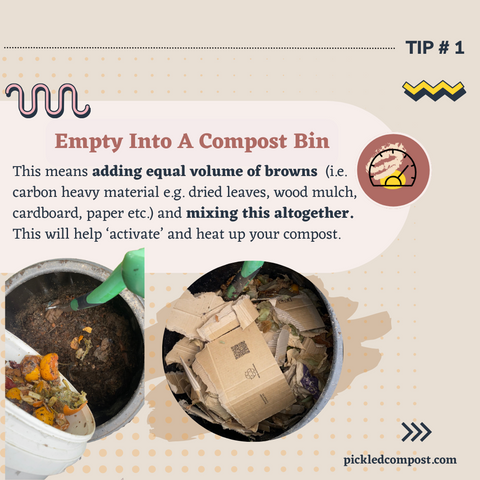
TIP #2 - Bury In Garden Soil or Lawn
Dig at least 20-30 cm deep and bury your pickled scraps into your garden soil or lawn. This is a great way to introduce lots of fertility if your garden or lawn needs it! The pickled scraps will disappear within 3-6 weeks. When burying pickled scraps in garden soil, wait 6 weeks before planting into.
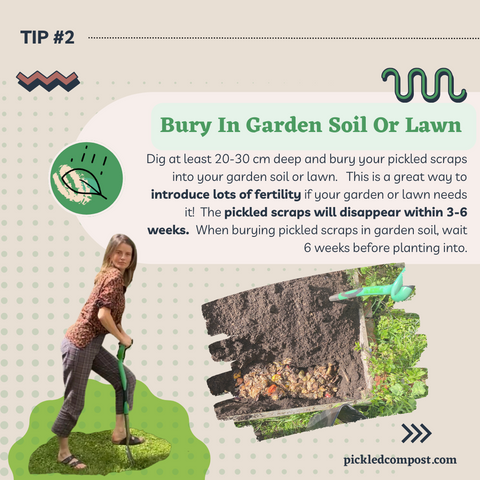
Tip #3 - Bury in Plant Pots or a 'Soil Factory'
This is a great option if you don’t have access to garden soil, a compost bin or a lawn. Simply use the pot plant soil or add soil to a large container to make a ‘soil factory’ and mix your pickled soilid with the soil.
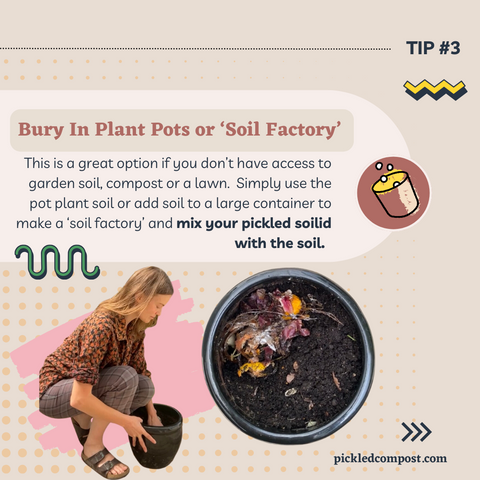
Tip #4 - Find A ShareWaste Host
ShareWaste is a free compost sharing platform. Simply sign up to sharewaste.org.nz (or sharewaste.com) to find a host in your local area who accepts Bokashi in their compost system.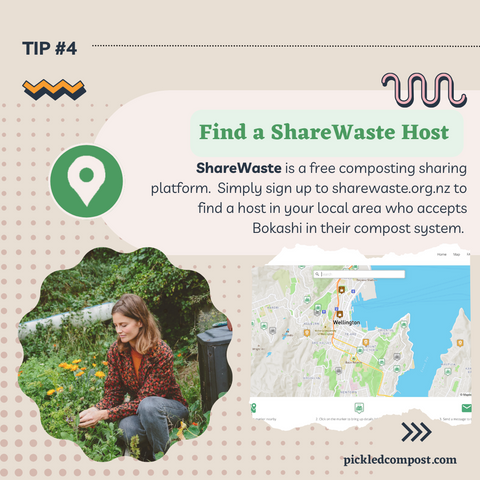
Tip #5 Find A Compost Collection Service
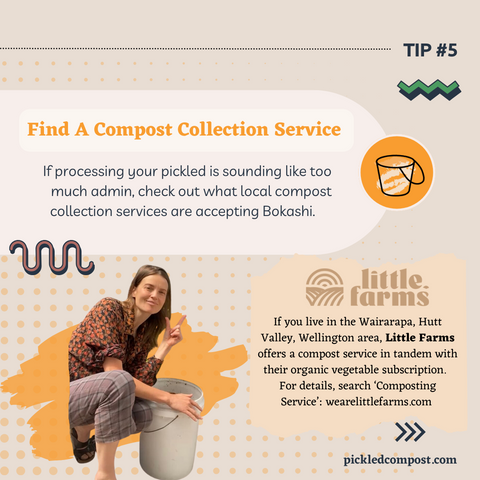
Tip #6 Supplementary feed for pigs
